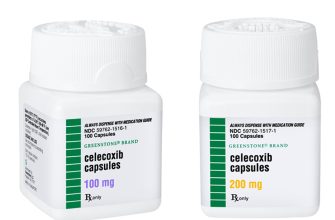Ketorolac is not classified as a narcotic. It belongs to a group of medications known as nonsteroidal anti-inflammatory drugs (NSAIDs). These drugs are primarily used for their anti-inflammatory and analgesic properties, making them effective for managing moderate to severe pain.
Unlike narcotics, which contain opioids and can lead to dependence and addiction, ketorolac does not have the same potential for abuse. It works by inhibiting the production of substances in the body that cause inflammation and pain, thereby providing relief without the risks associated with narcotics.
Healthcare providers often recommend ketorolac for short-term management of post-surgical pain or other acute pain conditions. However, it’s crucial to use this medication as directed, as prolonged use can lead to side effects such as gastrointestinal issues and kidney problems. Always consult with a healthcare professional before starting or discontinuing any medication.
Is Ketorolac a Narcotic?
No, ketorolac is not classified as a narcotic. It belongs to a category of medications called nonsteroidal anti-inflammatory drugs (NSAIDs).
Ketorolac is primarily used for its analgesic properties, providing effective pain relief without the sedative effects commonly associated with narcotics. Here are some key points regarding ketorolac:
- Mechanism of Action: Ketorolac works by inhibiting enzymes involved in inflammation and pain signaling, known as cyclooxygenases (COX-1 and COX-2).
- Uses: It is often prescribed for short-term management of moderate to severe pain, especially after surgeries.
- Administration: Ketorolac can be taken orally, by injection, or applied as an eye drop, depending on the specific condition being treated.
Though not a narcotic, ketorolac can still pose risks, including gastrointestinal bleeding and kidney damage, particularly with prolonged use. Always consult a healthcare professional before starting treatment.
For effective pain management, discuss with your doctor whether ketorolac is suitable for your situation, especially if you have a history of kidney issues or gastrointestinal disorders.
Understanding Ketorolac: Mechanism and Uses
Ketorolac is a powerful nonsteroidal anti-inflammatory drug (NSAID) primarily used for its analgesic properties. It works by inhibiting the enzymes COX-1 and COX-2, which play a significant role in the production of prostaglandins–hormone-like substances involved in inflammation and pain signaling. This inhibition results in reduced inflammation and alleviation of pain, making ketorolac effective for short-term management of moderate to severe pain.
Typically, ketorolac is prescribed after surgeries or for pain management in conditions such as arthritis. It is available in both injectable and oral forms, allowing flexibility in administration. It’s essential to follow dosing guidelines closely, as exceeding recommended doses can lead to serious side effects, particularly affecting the kidneys and gastrointestinal tract.
For acute pain relief, ketorolac is often administered in a hospital setting, with careful monitoring for potential adverse reactions. Its use is generally limited to a maximum of five days due to increased risks associated with long-term consumption. This drug is not suitable for everyone; certain populations, such as those with peptic ulcer disease or severe renal impairment, should avoid it.
Healthcare providers may choose ketorolac over opioids for patients seeking substantial pain relief without the risk of narcotic dependency. This quality makes it an attractive option, particularly in outpatient scenarios. Always discuss individual circumstances with a healthcare professional to determine the most appropriate method of pain management tailored to specific health needs.
Comparing Ketorolac to Narcotic Medications
Ketorolac is a nonsteroidal anti-inflammatory drug (NSAID) primarily used for managing moderate to severe pain, especially post-surgical discomfort. Unlike narcotics, which are opioids, ketorolac does not function through opioid receptors. Its action targets the pain pathway by inhibiting enzymes involved in inflammation and pain signaling.
Mechanism of Action
Narcotic medications, such as morphine and oxycodone, work by binding to opioid receptors in the brain, leading to a reduction in the perception of pain and an increase in pain tolerance. Ketorolac, on the other hand, inhibits cyclooxygenase (COX) enzymes, reducing the production of prostaglandins, which are responsible for inflammation and pain. This difference explains the varying side effects and potential for dependency associated with narcotics compared to ketorolac.
Side Effects and Risks
Ketorolac can cause gastrointestinal issues, such as ulcers or bleeding, as well as kidney impairment with prolonged use. It does not lead to physical dependence or addiction, which are significant concerns with narcotic medications. Patients using narcotics often face risks of tolerance, dependence, and withdrawal symptoms, which are absent when using ketorolac.
In summary, while both ketorolac and narcotic medications serve to relieve pain, they operate through different mechanisms and present varied risk profiles. ketorolac offers a non-narcotic alternative for pain management, especially in situations where the risks associated with opioids are a concern.
Safety and Side Effects of Ketorolac in Pain Management
Ketorolac is an analgesic that provides effective short-term relief from moderate to severe pain. Careful adherence to dosing recommendations is critical to minimize potential risks. Ketorolac typically should not be used for more than five days due to its potential for gastrointestinal bleeding, kidney damage, and cardiovascular events.
Common Side Effects
While ketorolac is generally well-tolerated, some patients may experience side effects. These include:
- Abdominal pain
- Heartburn
- Nausea
- Dizziness
- Headaches
Serious Risks
More severe side effects can occur, though they are less common. Monitoring for these conditions is imperative:
- Gastrointestinal bleeding: Signs such as blood in vomit or stool may indicate serious problems.
- Kidney damage: Symptoms like reduced urine output or swelling in the legs can signal kidney concerns.
- Cardiovascular issues: Patients with pre-existing heart conditions should consult their healthcare provider before using ketorolac, as it may increase the risk of heart attacks or strokes.
It’s essential to discuss your complete medical history with a healthcare provider, including any other medications you are taking, to prevent drug interactions and complications.
Stay hydrated during treatment, as dehydration can enhance the risk of kidney issues. Regular follow-ups can help ensure safe use and optimal pain management outcomes.










